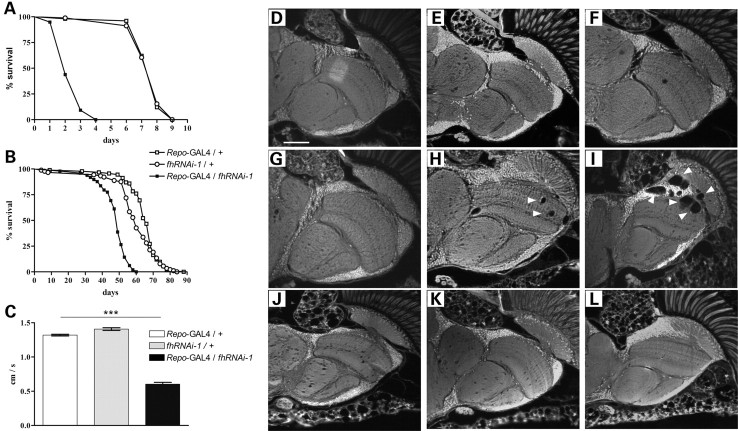Figure 3.
Physiological and behavioral effects of glial frataxin depletion. (A) Lifespan under hyperoxia (99.5% O2). Downregulation of frataxin in glia strongly enhances susceptibility to oxidative stress. (B) Lifespan under normoxia. Pan-glial reduction of fh expression shortens the mean and maximum lifespan compared with control flies. (C) Negative geotaxis experiment with 10-day-old individuals. Loss of frataxin in glia strongly reduced walking ability. (D–L) Autofluorescent paraffin brain sections. (D–F, Repo-GAL4/+controls); (G–I, Repo-GAL4/fhRNAi-1) and (J–L, fhRNAi-1/+controls). (D, G and J, 5-day-old flies); (E, H and K, 20-day-old flies) and (F, I and L, 35-day-old flies). Frataxin downregulation in glial cells induces age-dependent brain vacuolization focused on the outer chiasm, lamina and medulla (arrowheads). Statistical differences between survival curves in (A) and (B) were analyzed using the Kaplan–Meier test, and exclusively Repo-GAL4/fhRNAi-1 showed a statistical significant behavior (P < 0.001). Significance in (C) was determined by one-way ANOVA with post hoc Newman–Keuls (***P < 0.001). Error bar represents standard error. The scale bar represents 50 μm.

